
With their lively culture intertwined with their cattle herds, the Maasai spark eagerness and intrigue in all who venture to Tanzania. In this exploration, we delve deep into the fascinating life of this iconic tribe, uncovering their enduring traditions, vibrant ceremonies, and deep-rooted connection to the land.
Join us as we embark on a journey into the heart of Maasai territory, exploring the best ways to connect with these proud and resilient people, from immersive village stays to exhilarating day trips!

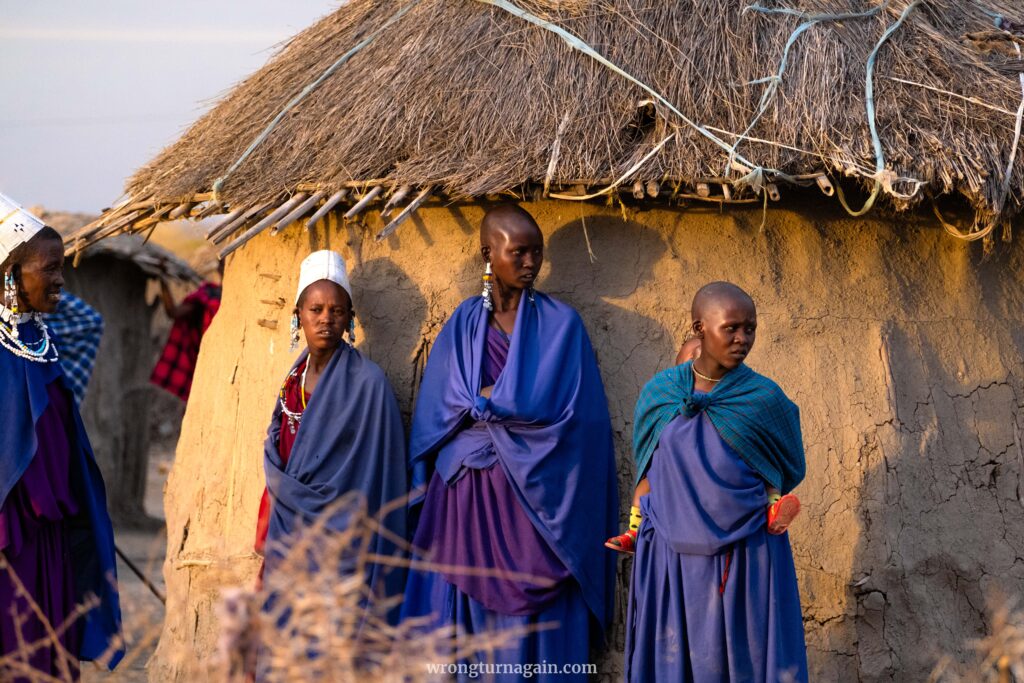
Maasai Roots & Dwellings
Compelling linguistic and archaeological evidence points to the Maasai people’s origins in the lower Nile Valley, situated north of Lake Turkana in Northwest Kenya. In the 15th century, however, fueled by the demand for ample pastureland for their cherished cattle herds, they embarked on a southward migration, scattering across the expansive East African region. The journey concluded with the Maasai settling in the enchanting landscapes of southern Kenya and northern Tanzania.
Intertwined with this nomadic lifestyle is the Maasai perspective on land: home is where the food for their cattle is found. The land is considered a communal resource dedicated to sustaining their livestock. In times of severe drought, they adapt their grazing practices to include marginal lands rarely utilized in typical circumstances. This adaptability is also reflected in their dwellings, ingeniously crafted to accommodate their nomadic existence.

In their traditional settlements known as “Manyattas,” the Maasai reside in semi-permanent low-domed huts encircling a cattle enclosure.
Constructed mainly by women, these circular or loaf-shaped huts are fashioned from sticks plastered with a mixture of mud and cow dung. They are organized in a circular pattern and are enclosed with fencing made from tangled, thorny acacia branches to keep livestock in and predators out.


Maasai Community & Family Life
The Maasai society follows a strong patriarchal system, where males go through various stages marked by specific rights, duties, and clothing.
The journey for boys begins with the circumcision rite, marking their initiation into shepherding. They start with tending to sheep and goats, gradually progressing to the care of cows. The next phase marks their elevation into newly initiated warriors (“morani”), entrusted with safeguarding cattle herds and guiding them to water sources and grazing lands. Formerly, young Maasai morani would prove their strength by hunting male lions, but this practice ceased with the introduction of the conservancy model around 2000, as Maasai communities recognized the benefits of wildlife tourism.
Between the ages of 30 and 40, Maasai men transition into junior elders, embracing the expectation of marriage and settling down. Beyond this stage, they become senior elders, tasked with making judicious decisions for the community’s well-being.
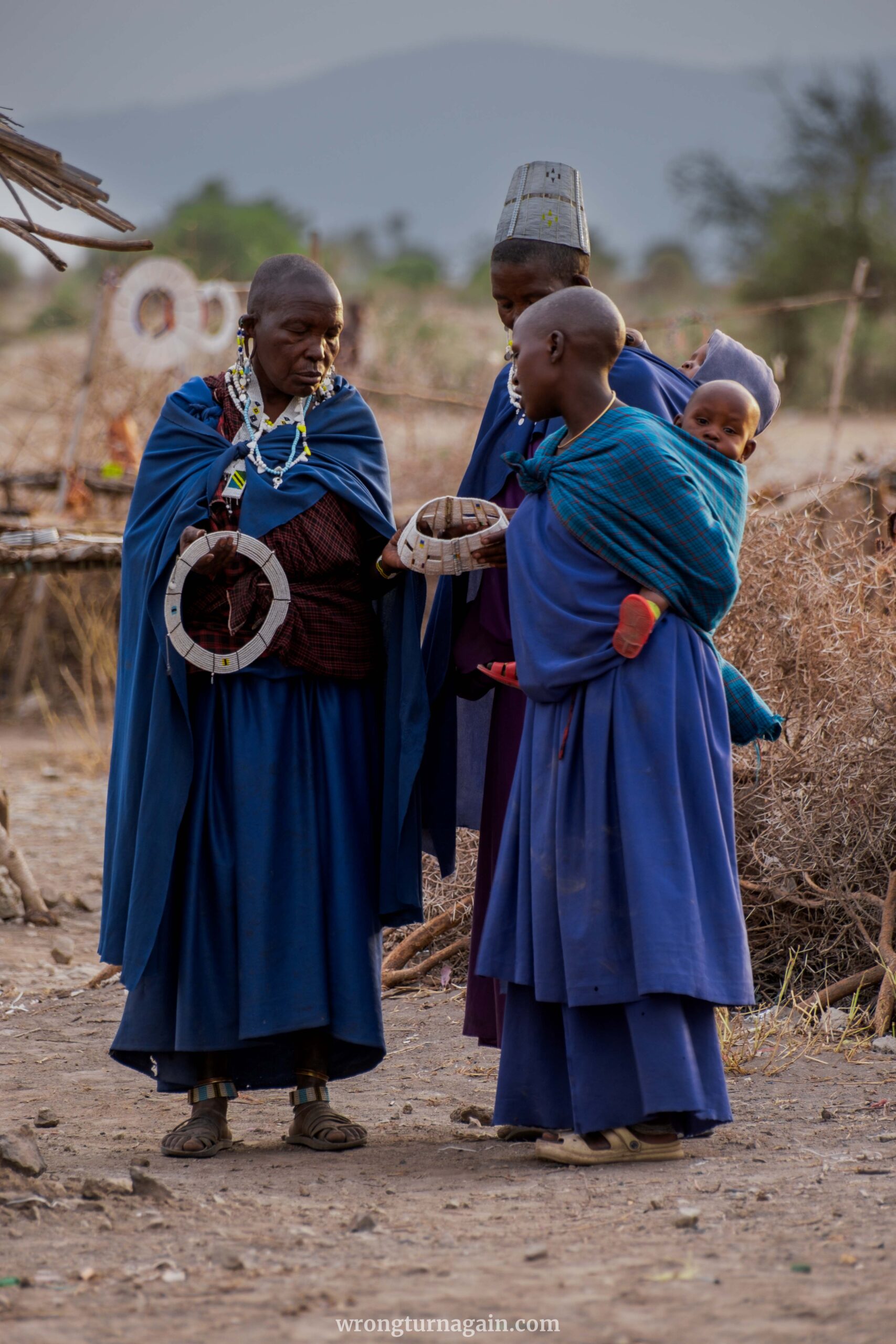
In contrast, Maasai women occupy markedly subservient roles within the community. Their daily routines involve early rises for milking cows, laborious journeys to water holes for laundry and water, and collecting firewood, often bearing heavy loads back home, occasionally assisted by a donkey. Dependency on their husbands prevails, devoid of inheritance rights.
Regarding family structure, polygyny is upheld as an ideal for many older men. Following circumcision between ages 11 to 13, girls are married off to suitors chosen by their fathers, typically in exchange for cattle and cash. The bride has little say in this arrangement and she becomes one of many wives, destined to bear numerous children.
The fate of Maasai women is entrenched in strict societal norms. Divorce is a rarity, allowed only in extreme cases of physical abuse. Even if the husband chosen by her father passes away prematurely, leaving her in her teens, she becomes the responsibility of one of her deceased husband’s brothers, losing autonomy in decisions regarding her future.



Maasai & Their Cattle: A Vital Bond
The Maasai engage in a diverse array of roles, encompassing wildlife rangers diligently patrolling against poachers, safari guides revered for their exceptional wildlife expertise, and herders perpetuating the enduring tradition of safeguarding their cattle and seeking new pastures. But it is within this herding practice that the essence of the Maasai lifestyle finds its concentration.
Historically, the Maasai’s profound reliance on cattle has been the cornerstone of their sustenance, providing essential elements for food, clothing, and shelter. Their diet still revolves around milk, dairy products, cattle fat, and blood, vital for their intake of salt. Utensils and vessels for cooking and drinking are crafted from cattle rib bones and horns, while hides are repurposed for bedding and constructing temporary shelters. The enduring attire, known as shuka, was traditionally made from cowhide, and even today, leather from cattle is fashioned into sandals.

Beyond sustenance, cattle hold profound economic and social significance. Families aim to amass sizable herds, showcasing their prosperity and societal standing. The animals are frequently exchanged for various goods and services, serving as an integral part of marriage customs by being included in a bride’s dowry. Wealth, measured in cattle, enables men to engage in polygamous marriages. Additionally, the community’s acknowledgment of exceptional bravery is often expressed through the gift of cattle to young warriors, while conversely, restitution for dishonorable or criminal behavior may involve payment in cattle.
Moreover, cattle hold a significant place in Maasai spirituality. According to Maasai belief, the creator deity Enkai lowered all the cattle on earth down a rope from the heavens, entrusting them to the Maasai. This ideology once justified raids on other tribes as efforts to reclaim what was deemed inherently theirs, although such practices have notably waned over time. As a result, cattle remain central to religious ceremonies, frequently offered in rituals to honor the gods or solicit blessings.



Maasai Culture & Spiritual Beliefs
Language
Although many Maasai are acquainted with Swahili, the prevailing language in East Africa, their core means of communication is Maa—an oral Nilotic language upheld and passed down verbally through generations. Notably, the Maasai people’s nomenclature finds its origin in the Maa language, where the term “Maasai” directly signifies “one who speaks the Maa language.”

Music and dance
The essence of Maasai culture transcends generations through the timeless art of singing and dancing, with minimal reliance on written records.
Their songs encompass narratives spanning from tales of cattle raiding to ceremonial invocations for rainfall. The olaranyani, serving as the song leader, carries the melody, while rhythmic chanting and percussive beats from drums and rattles accompany the music, providing the backdrop for their traditional dances.
Among these dances, the adumu, also dubbed the “jumping dance,” holds paramount significance. It embodies vitality, strength, and masculinity, often serving as a display of prowess to attract a spouse. Typically performed by young warriors, the adumu involves vertical jumps from a standing position while maintaining an upright posture. The height reached during these jumps showcases their physical prowess and enduring strength.
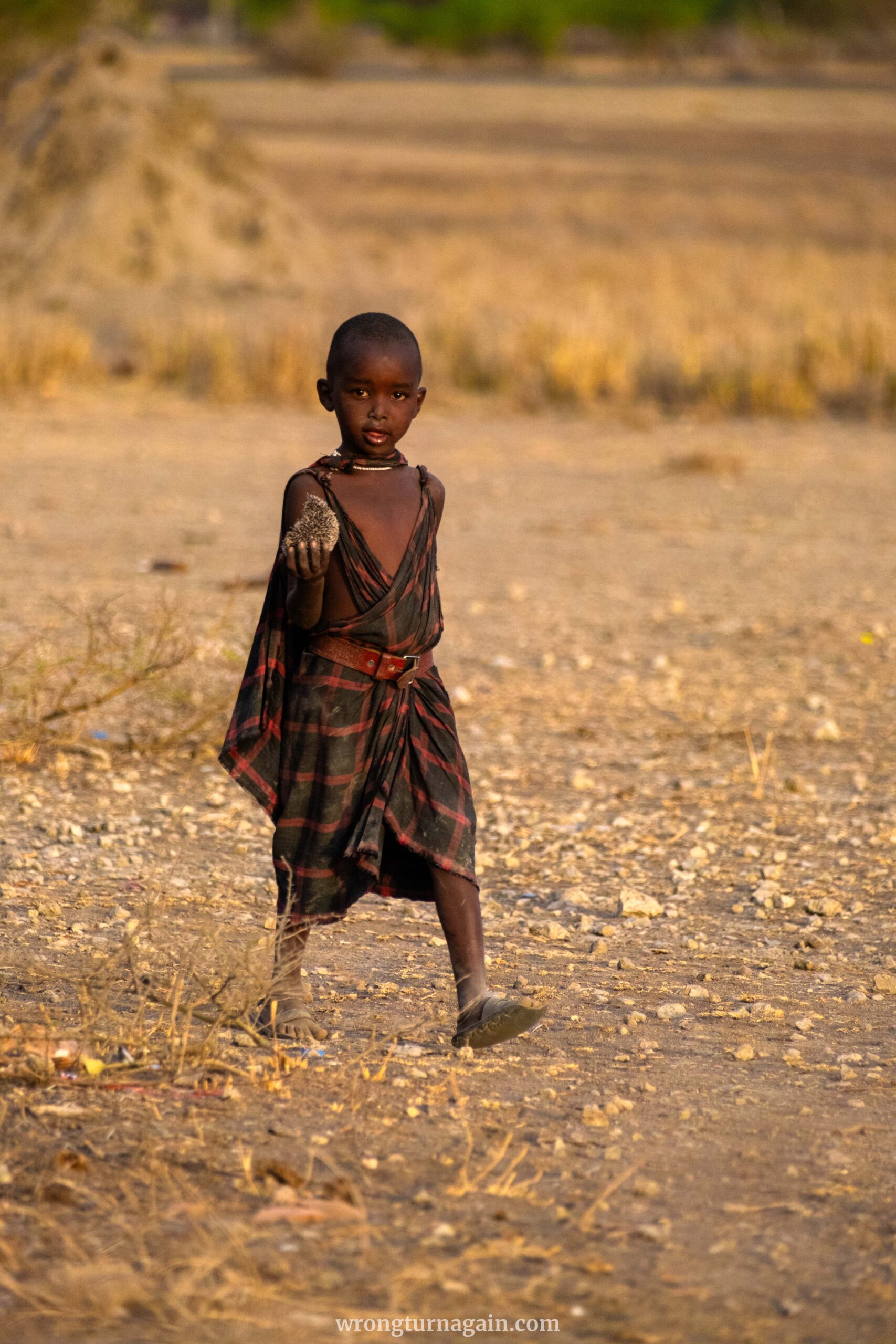
Religion
The Maasai traditionally hold strong animistic beliefs centered around a monotheistic god called Enkai or Engai. Enkai is believed to have dual aspects: Enkai Narok, the black god who is benevolent and associated with rain and thunder, and Enkai Nanyokie, the red god who is considered vengeful and associated with lightning. These beliefs often revolve around a deep connection to nature and the spiritual significance of their surroundings.


The Maasai have a rich oral tradition and their religious practices involve rituals, ceremonies, and prayers conducted by their spiritual leaders, known as Laibon. The Laibon hold a significant position within the community, acting as spiritual guides, healers, and mediators between the people and the divine.
As exposure to different faiths has increased, several Maasai individuals have embraced Christianity or Islam, yet many continue to uphold aspects of their traditional beliefs. This dynamic fusion of religious practices has created a unique tapestry within the Maasai community, where elements of both newer faiths and longstanding traditions coexist.


Expressions of Identity: Adornments & Rites
Apparel and Ornaments
A striking hallmark of Maasai culture lies in their vibrant attire adorned with intricate beadwork and unique patterns, each carrying symbolic significance. These colors and patterns are more than ornamental; they convey vital information about age, marital status, and social standing.
Both men and women traditionally wear shukas, which are large sheets of fabric draped over the body. These shukas can be worn in various ways—wrapped around the body as robes, draped over the shoulders, or tied around the waist. The predominant colors, notably red and blue, bear symbolic weight; red signifies strength and warriorhood, believed to deter predators like lions from afar, while black is worn by young men post-circumcision.
Beadwork is also an integral part of Maasai attire. Women, in particular, are known for their skillful beadwork wearing elaborate and colorful beaded jewelry, including necklaces, bracelets, and earrings. Headdresses, especially prevalent among Maasai warriors, further accentuate their distinctive attire.
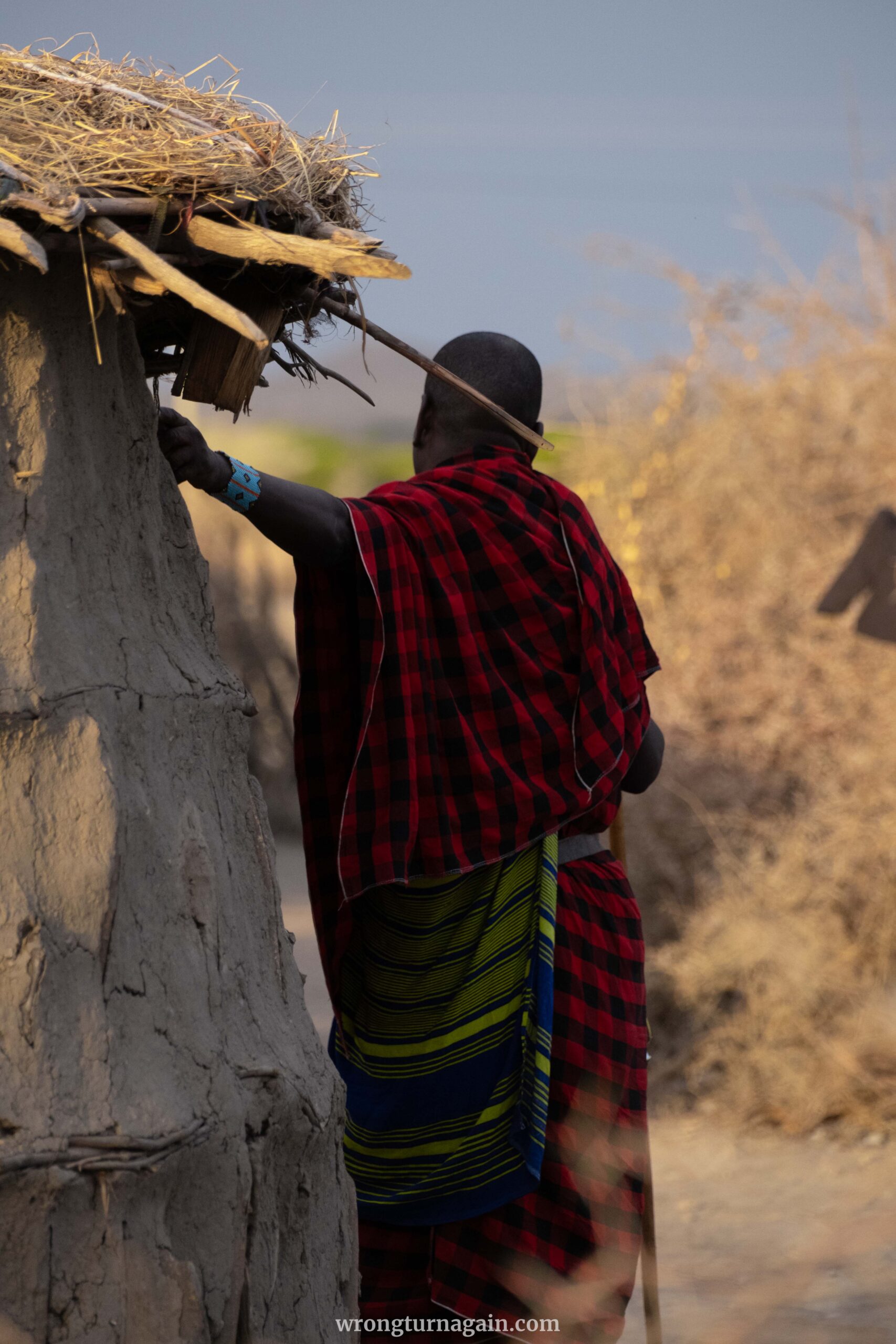

Hair Customs
The Maasai people, irrespective of gender, typically shave their heads to commemorate significant life events such as circumcision, marriage, and the naming ceremony held when children reach the “age of three moons”. During the latter, children have their heads shaved, leaving a single tuft of hair, resembling a cockade, from the neck to the forehead—a symbolic gesture signifying a fresh start as they transition between life’s chapters.
Distinctively, Maasai warriors (morans) are permitted to maintain long hair, intricately weaving it into thin braided strands. However, even they undergo head-shaving during Eunoto, a paramount ceremony signifying the conclusion of their warrior phase and the onset of young elderhood (ilpayiani).

Body Modification
In the realm of Maasai aesthetics, ear piercing and the elongation of earlobes are embraced as expressions of beauty. Men and women adorn their stretched earlobes with metal hoops, highlighting the cultural significance of this practice. Additionally, a prevalent practice involves the extraction of deciduous canine tooth buds during early childhood, rooted in the belief that these buds, dubbed ‘maggots,’ are false teeth or harmful entities responsible for various ailments.
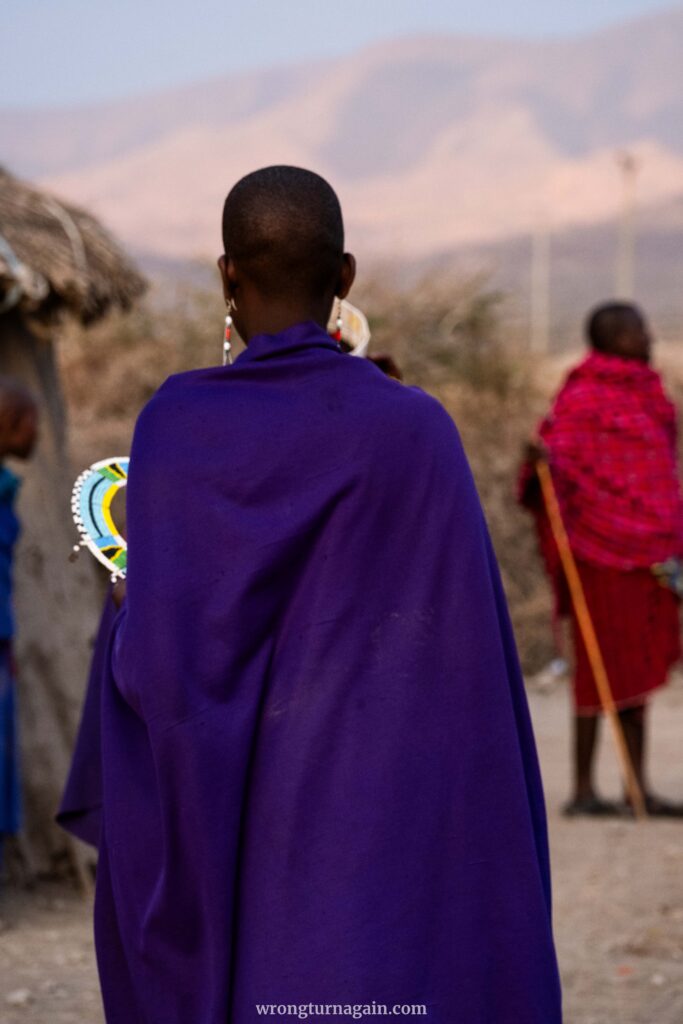

Circumcision as a Rite of Passage
Among the Maasai, circumcision is a pivotal rite of passage for both genders, denoting the shift from childhood to adulthood in the ceremonial tradition called “Emuratare.” For young men, it serves as a test of fortitude, demanding endurance without displaying pain or fear. Meanwhile, uncircumcised women might be perceived as lacking the maturity to be taken seriously. While female genital mutilation was once prevalent, efforts in education, awareness campaigns, and advocacy for Alternative Rites of Passage (ARP) have led to a gradual decline in this practice.

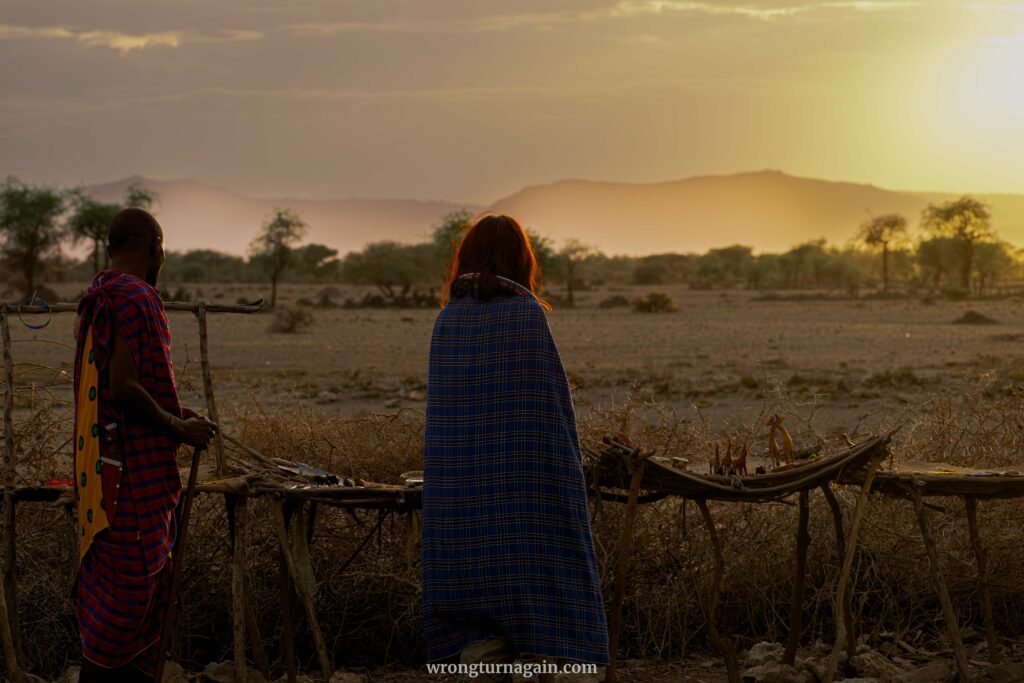
How to Visit the Maasai People
If you’re craving a taste of Maasai culture, look no further than the vibrant northern regions of Tanzania. From the bustling streets of Arusha to the vast expanses of the Ngorongoro Conservation Area and the wilds of the Serengeti, opportunities to immerse yourself in Maasai traditions abound.
The Ngorongoro Conservation Area (NCA), in particular, unlike typical national parks where human residents were evicted, stands out as a unique sanctuary where over 40,000 Maasai people thrive alongside the wildlife, maintaining their ancestral grazing rights. This makes Ngorongoro, in our view, the ultimate destination for an authentic Maasai encounter in Tanzania.
For a visit, consider day trips from Arusha or Moshi, stay overnight in a Maasai village, or stop at a Maasai boma en route to Ngorongoro or Serengeti safaris. Plenty of options to experience Maasai culture firsthand!

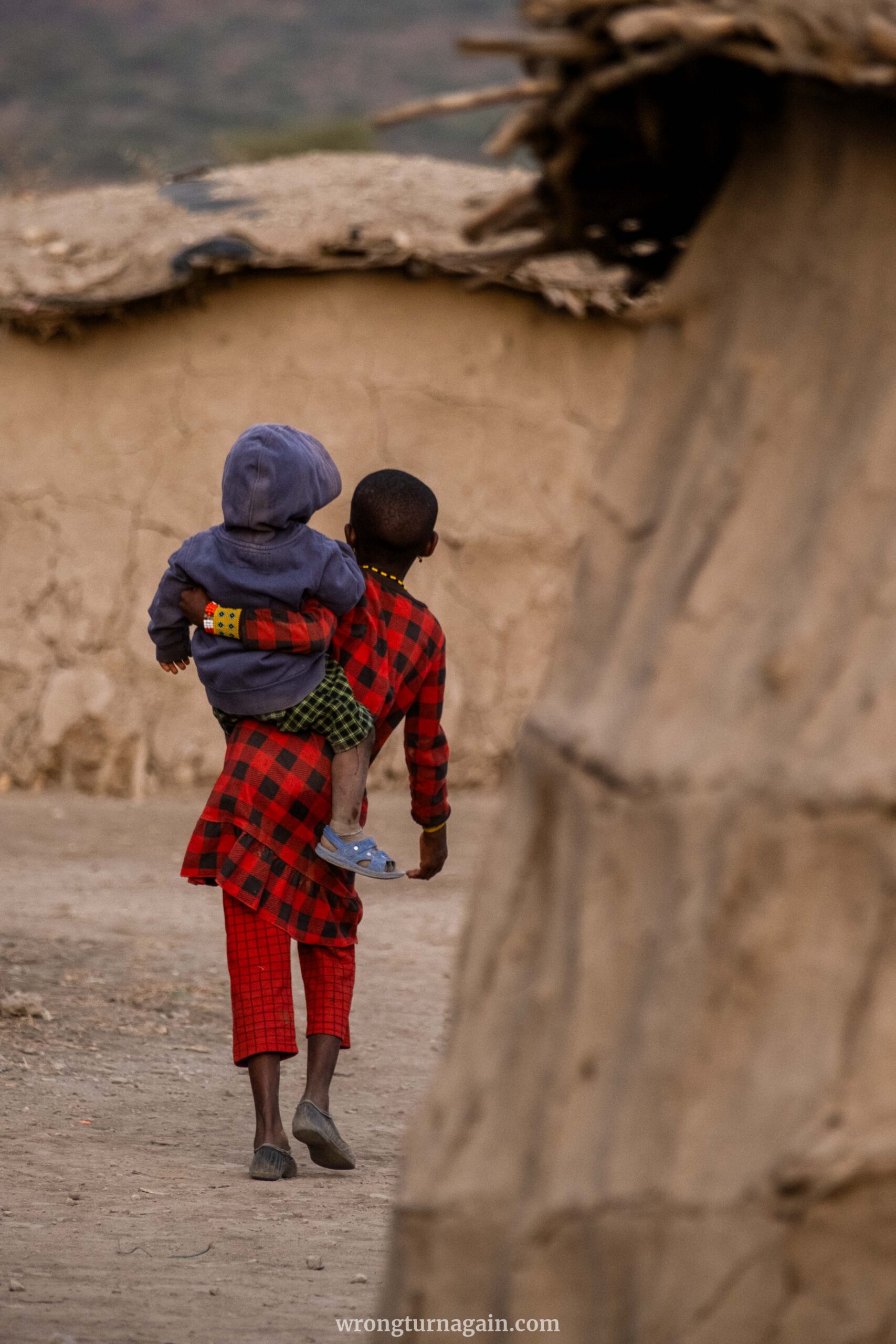
Day Trips from Arusha or Moshi
To delve into Maasai culture effortlessly, embark on a fascinating day trip from Arusha or Moshi, arranged by a tour operator. Your journey includes transportation, knowledgeable guides, and immersive experiences in traditional activities.
Upon arriving at the Maasai Boma, you’ll be greeted with traditional songs and adorned with iconic Maasai clothing, including vibrant shukas and intricate jewelry. Clad in red-checkered woolen cloaks and recycled tire sandals, the young warriors, or morans, proudly wield beaded fimbos—wooden spears used for herding livestock and warding off wild animals—while posing for photographs. They’ll dazzle you with the “adumu,” the renowned jumping dance, a spirited contest showcasing their prowess as they soar skyward in a display of strength, inviting you to join in the fun.

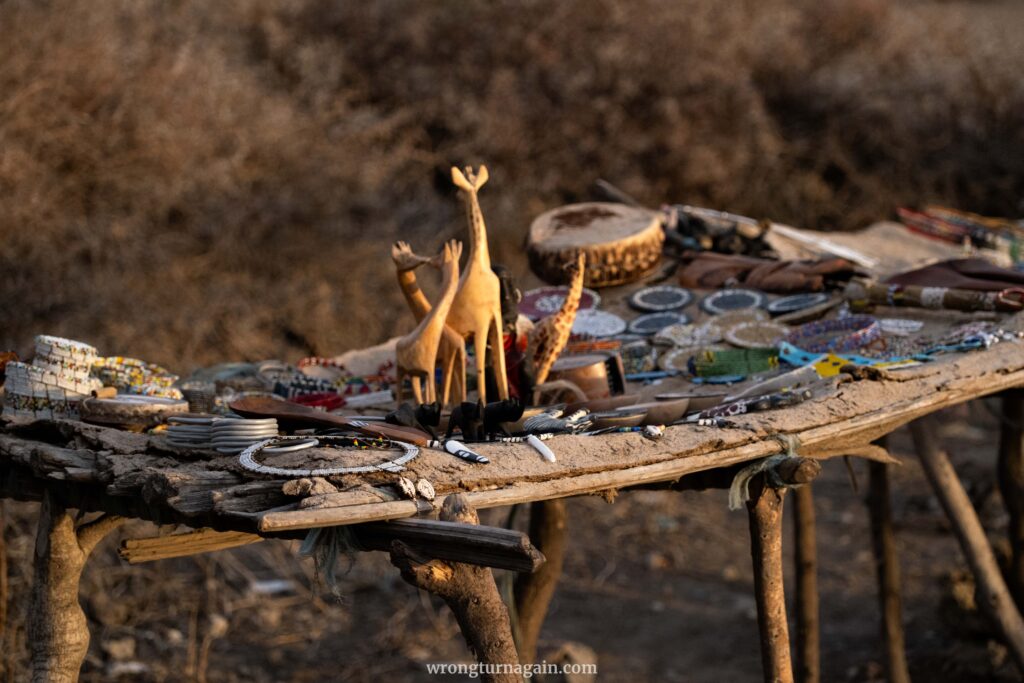
Beyond their captivating dance and melodies, the Maasai eagerly share their heritage, demonstrating various facets of their culture, from traditional housing and beadwork to fire-making techniques, ornamental craftsmanship, bush survival skills, and medicinal knowledge. You can even accompany them as they tend to their cattle on the vast plains, milk cows, gather water, or inspect bee hives.
Many tours extend the experience with visits to bustling Maasai markets in Arusha or Moshi, offering a kaleidoscope of handcrafted treasures like beaded jewelry, authentic garments, and ornamental artifacts. Other tours venture further, combining the Maasai encounter with explorations of Materuni Waterfalls or Kikuletwa Springs and encounters with the Chagga people.

Keep in mind that there are also commercialized Maasai bomas for visitors to get an idea of the Maasai culture and how they live. Some of these bomas are replicas, offering a cultural immersion even though they are not inhabited by the Maasai themselves.
— Organized Tours 🛻 —
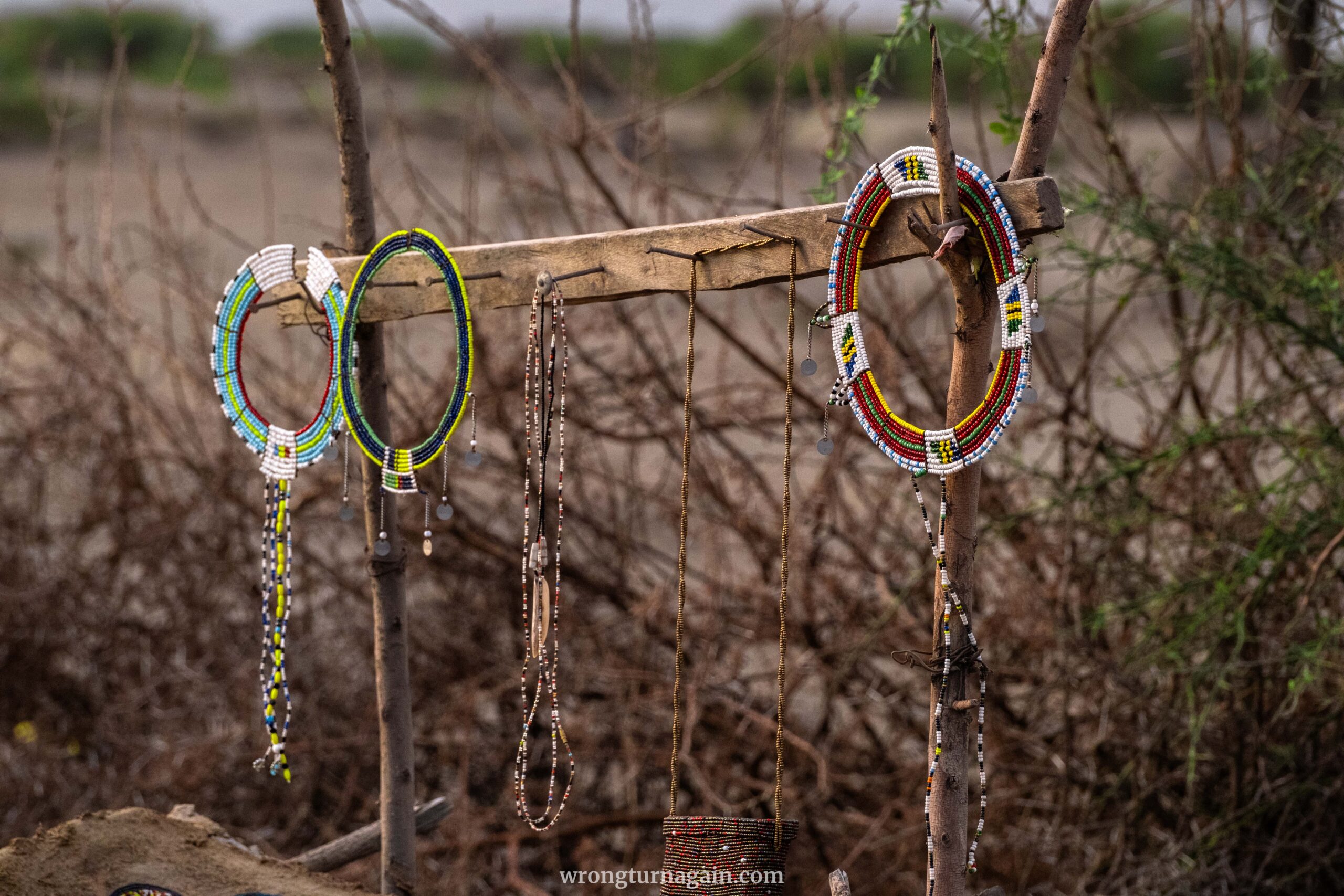
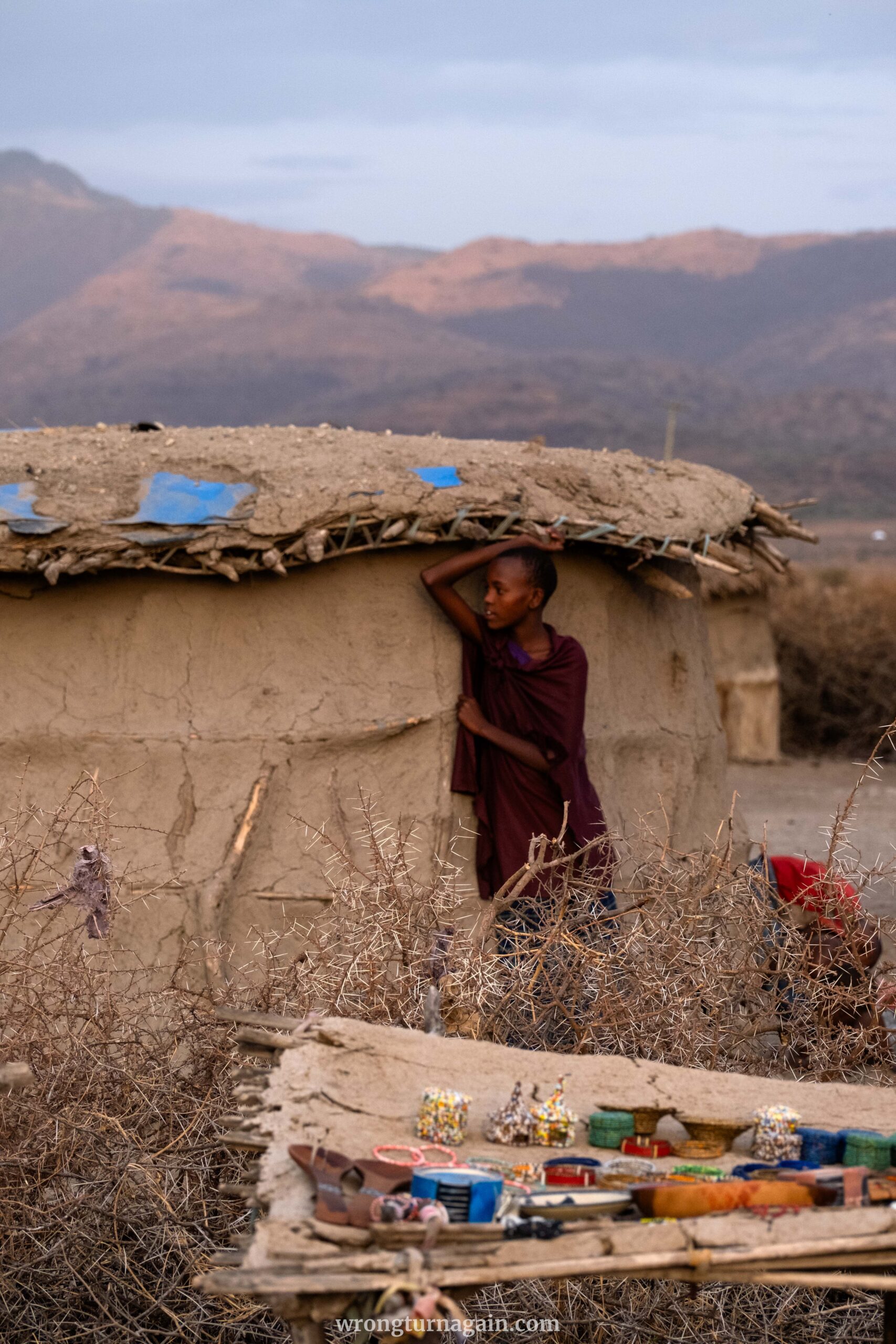
Overnight Stays in a Maasai Village
For a profound immersion into Maasai culture, consider spending a night in one of their villages. To arrange this unique experience, it’s advisable to book through a reputable tour operator or directly with a Maasai community offering homestay opportunities. Your chosen operator will take care of all logistics, including transportation, lodging, meals, and activities.
During your stay, anticipate modest accommodations in traditional Manyattas (huts) and communal dining with meals prepared by your gracious hosts. Engage in activities such as cattle milking, herbal medicine demonstrations, or participation in evening rituals, allowing you to fully embrace the Maasai way of life. It’s essential to show respect for local customs, seek permission before capturing photographs, and remain receptive to learning from your Maasai hosts.

Visit Natives facilitates stays with the Maasai in Mto Wa Mbu village, within the Ngorongoro Conservation Area, or in the secluded Moipo. Another option is the Olpopongi Maasai Cultural Village & Museum, offering accommodations tailored to tourist standards while preserving an authentic ambiance, constructed under the guidance of a multicultural team, with over 50 Maasai members.

Maasai Boma Visit en Route to Ngorongoro or Serengeti Safari
If you’ve already secured a safari adventure to Ngorongoro Crater or the Serengeti, consider enriching your journey with a stop at a Maasai boma along the route. Many safari operators are accommodating and can seamlessly incorporate these cultural encounters into your itinerary. Typically, there’s no extra fee for this addition, though you’ll be expected to contribute around $20 per person directly to the Maasai family hosting you.
At the boma, you’ll typically spend a couple of hours engaging with the Maasai and acquiring handmade crafts directly from the skilled artisans. While these interactions may be brief, they offer invaluable glimpses into Maasai life, complementing your safari experience beautifully.

Opt for bomas located within the Ngorongoro Crater for a more quintessential setting compared to those along the route from Arusha to the park entrance.

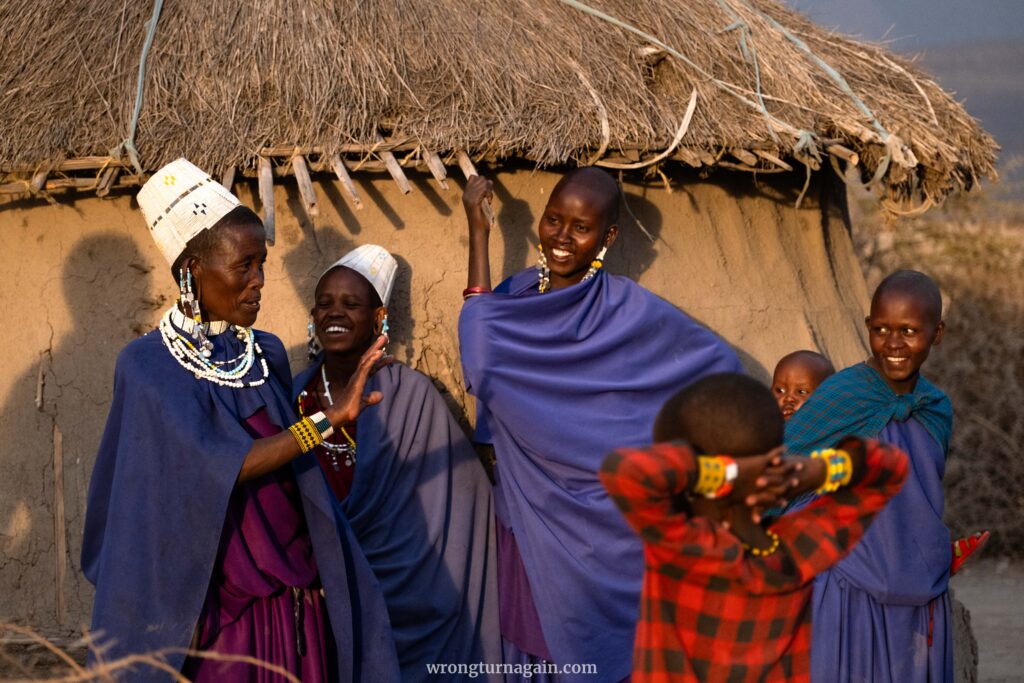
No matter which option you select, prioritize booking with a responsible tour operator committed to fostering respectful interactions and empowering the local Maasai community. While certain aspects of the visit, such as the jumping dance performances and souvenir stands – which come with higher price tags than typical markets – may seem geared toward tourists, they serve as a cultural bridge. They allow visitors to witness traditional practices while providing vital financial support to the Maasai communities.

The enchantment of the Maasai is merely the gateway to a mesmerizing expedition through the tribes of Northern Tanzania. Delve deeper to encounter the Hadzabe tribe, the last remaining Hunter-Gatherers of East Africa, or visit the neighboring Datoga Blacksmiths. Alternatively, journey to the foothills of Kilimanjaro to meet the Chagga tribe amidst lush coffee and banana plantations and thundering waterfalls.
Get set for an unforgettable cultural feast!